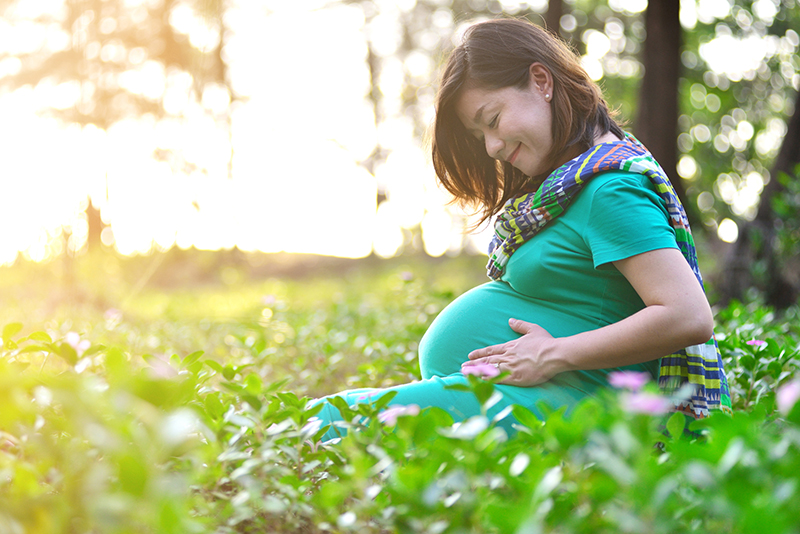Families For Life | Pregnant with Twins – Double Joy or Double Trouble?

You are unique if you are carrying twins! Twins occur only in one in every 80 pregnancies. There are many unique issues in twin pregnancies, which you will need to understand.
Identical and non-identical twins
One-third of twins are identical and two-thirds non-identical.
In identical (monozygotic) twins, one egg is fertilised by one single sperm, but the egg divides into two embryos soon afterwards. Thus, both twins have the same genetic material and will have the same sex with perfect resemblance.
The identical twins can share one placenta (“mono-chorionic”) or have two different placentas (“di-chorionic”). They can be housed in one water sac (“mono-amniotic”) or two separate water-sacs (“di-amniotic”).
It is important to know whether the twins are identical or non-identical as identical twins have increased risks, which will be described later. This check for chorionicity is best done by ultrasound scan in the first trimester.
On the other hand, non-identical (dizygotic) twins occur when two separate eggs are fertilized by two separate sperms. Thus, the genetic make-ups of both twins are different and they can be of the same sex or different sex. Each twin will have its own water sac and placenta.
Possible problems of twin pregnancies
While it is a great joy to carry twins, more complications may arise as compared to a singleton (one baby) pregnancy.
Mothers who are carrying twins tend to get high blood pressure and diabetes in pregnancy more commonly. They are also prone to anaemia and thus need iron supplementation.
There is an increased risk of miscarriage in twins during early pregnancy. Unfortunately, miscarriage of one twin can sometimes occur. If this occurs early in the pregnancy, the mother’s body will simply absorb the remaining tissue. If it happens late in the pregnancy, very close observation and follow-up is required. The remaining twin may suffer from mental handicap from the toxins released due to the dead twin, especially if they share a common placenta.
Down syndrome screening test is best done by a nuchal translucency (neck thickness) scan of both twins at 12–13 weeks.
Preterm delivery is common in twin pregnancy, usually before 36 weeks instead of 40 weeks as in singleton pregnancy. However, premature delivery can occur as early as 6–7 months of pregnancy. The babies may not survive at such prematurity and may need prolonged stay in the neonatal intensive care unit.
Identical twins are usually delivered earlier at around 34–36 weeks.
The growth of both twins will need close monitoring, especially in identical twins. Your doctor will see you more frequently during your pregnancy as compared to a singleton pregnancy. Ultrasound sessions would be done more frequently to chart the progress of the growth of both babies.
Monochorionic twins who share a single placenta may not share the blood flow in the placenta equally. This leads to “twin–twin transfusion” and may occur in 15% of such pregnancies. Most cases are mild. However, serious cases can be dangerous to both babies and will require a specialist’s management.
Problems with triplets and higher-order multiple pregnancies
The chance of spontaneous triplet and higher-order multiple pregnancies is rare. However, with in vitro-fertilisation (test-tube babies) and other assisted reproductive programmes, these pregnancies can happen more often.
Your doctor will need to discuss the risks of triplet pregnancies carefully. All the risks discussed above are multiplied many fold.
The risk of preterm delivery is extremely high and most triplets deliver at about 7–8 months. They will usually need to stay in the neonatal intensive care unit after delivery because of low birth weight and prematurity.
Social implications of a twin pregnancy
Very clearly, there are direct financial implications when the twins are due. You will need to buy two of everything. You will need double sized push-chairs, need to double up on the supplies, have double food to buy, need two car seats, etc.
Other than the stress of financial support, you will need to cope with double the number of nappies to change, twice the crying (in volume or in duration) and double the late night wake-up calls. You will definitely need more help!
However, there are upsides too. After all, if you were planning to have two kids only, then you have to go through the pregnancy process only once. Thus, although there could be double trouble, there is double joy as well!
Did you know?
At 32 weeks gestation, baby is an average of 2000 grams and is about 42 cm long.
Your baby's five senses are now developed and functioning. Your baby can also see light through the womb and react to it.
Your baby can now also produce tears.
Your baby develops rapid eye movements (REM) sleep now and is capable of dreams!
Explore more
By Dr TAN Thiam Chye, Dr TAN Kim Teng, Dr TAN Heng Hao, Dr TEE Chee Seng John,
KK Women's and Children's Hospital
Sources:
The New Art and Science of Pregnancy and Childbirth, World Scientific 2008.
Copyright © 2023 HealthHub.sg. All rights reserved.